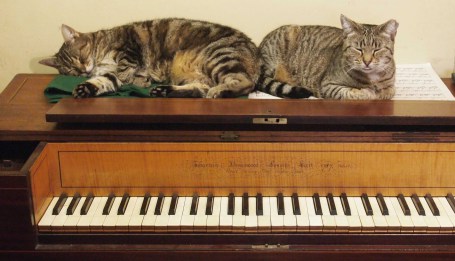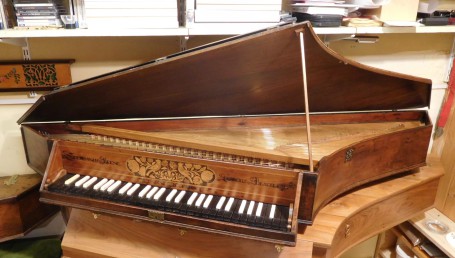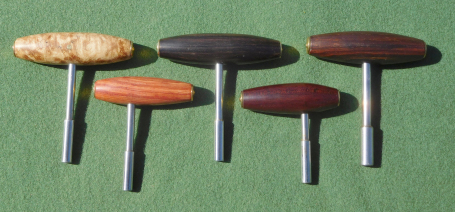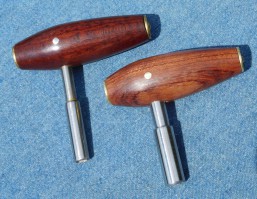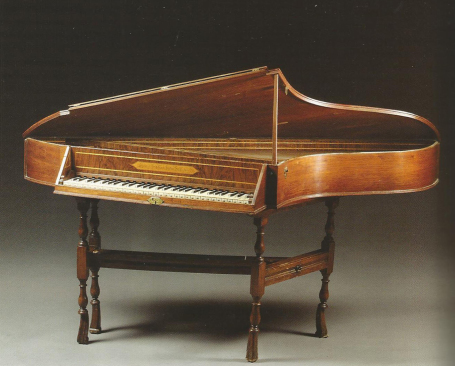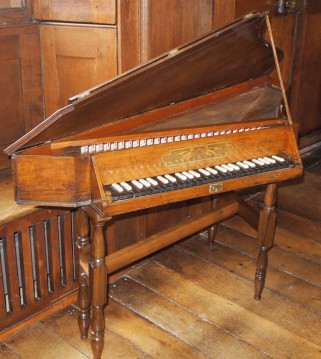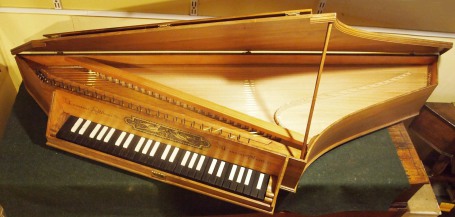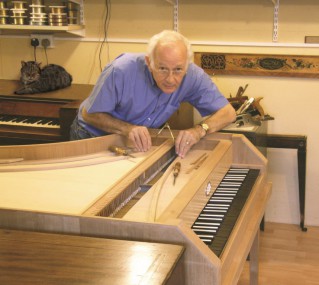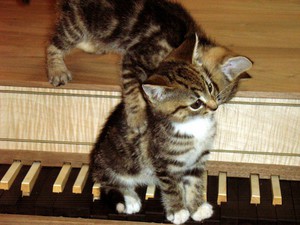
Welcome to
Friends of Square Pianos
This is a website for anyone who owns, or would like to own, a square piano, or possibly a spinet. Or a harpsichord, or a clavichord... Or anyone who is just interested, and would like to learn a little more.
Please get in touch with me, David, on friends.sp@btinternet.com with questions, comments, or just to say 'Hello'. This is a site for everyone, especially those new to the world of Early Keyboard Instruments. And of course, we very much appreciate the support of those with more experience.
Update July 26th
J & J Thompson c. 1815 Free to Good Home
Broadwood 1790 For Sale
1777 Piano by Adam Beyer in Kingham's Auction, 25 July - Sold for £3,900
J & J Thompson c. 1815 Free to Good Home
We can find no record of John & Jeremiah Thompson, so the likelihood is that they were dealers, selling pianos by another maker under their own name. But it's a handsome piano, and in pretty good order. Good to see that all six legs and the pedal are present. It is very generously now offered Free to Good Home.
Please see the Sale Page for pictures and details
Broadwood 1790 For Sale
I'm happy to present another fine example of my favourite pianos, a first-generation Broadwood, with the original straight brass under-dampers - before hammers got bigger, strings thicker, the sound louder... all in the name of progress of course. But for the music of J C Bach, Haydn, Mozart - it's good to get back to the gentler sounds of the time. This piano, N° 1461, is an example of the 'Elegant ' model, with a cross-banded cases and a French stand.
Please see the Sale Page for pictures and details.
A Beautiful 1777 Piano by Adam Beyer in Kingham's Auction, 25 July
Sold for £3,000 hammer-price; £3,900 including premium. This piano is a good example by arguably the finest of the early English makers, Adam Beyer. Please see the Auction Page for pictures and details.
Zuckermann 'Flemish' Harpsichord
1982 For Sale
This fine example of a Zuckermann single manual 'Flemish' harpsicord was built by Morton Gould in 1982. This is a practical instrument, small and light enough to be easy to move around, and it holds its tune well. Please see the Sale Page for details.
'Viennese' Fortepiano by Neupert 1967
For Sale
This beautiful 'Viennese' piano in a cherry case was made by Neupert in 1963, and refurbished by them in 2023. It is now offered for sale; please see the Sale Page for pictures and details, including a link to a sparkling recording of a Mozart sonata movement by the seller herself.
Broadwood 1801 For Sale
This 1801 Broadwood retains the beautiful gravity-operated brass under-damper action, and has the 5½-octave compass that was becoming standard by then. Please see the Sale Page for pictures and full details.
'Ruckers' by Michael Thomas c. 1970s
This very practical harpsichord by the well-known twentieth-century maker Michael Thomas is based on originals made by the Ruckers dynasty, and was made c. 1970. Please see the Sale Page for pictures and details.
Southwell Upright Square c. 1798
A rare opportunity to purchase a William Southwell upright square piano, N° 40, Dublin, Ireland, void of action and internal structure. The internal parts were removed many years ago, and the more recent intention has been to reconstruct the piano, but this has not happened. It is being sold as a fine example of late 18th-century cabinet work for the purpose of display, or a competent maker could reconstruct it as a working piano. There are witness marks internally, and a considerable amount of detail could be provided if this were to be the purpose of purchase. Sold now, but pictures and details are still on the Sale Page
Original English Spinet c. 1770
at Clevedon Salerooms 13 June
It is rare that the opportunity arises to buy an original English eighteenth-century spinet. This one does not have a visible maker's name, but it is entirely typical of the later instruments, exhibiting the newly-fashionable mahogany construction. Please see the Auction Page for pictures and details.
A New CD by Jonathan Delbridge
We were privileged to hear Jonathan as one of our soloists at the Friends of Square Pianos party in April, and I am now happy to recommend his beautifully presented new CD, recorded on the 1814 Broadwood that he brought to Chelveston. Most of the chosen pieces were written in the early days of the square piano, from well-known composers including Haydn and Clementi, but also some delightful pieces by lesser-known composers such as Burney and Pinto. Inclusion of an arrangement of Elgar's 'Nimrod' is perhaps a surprise, but Jonathan reminds us that this is one of the several pieces that Elgar composed at his 1844 Broadwood square at Malvern Cottage.
For several of the pieces, Jonathan is joined by the charming soprano Molly Jasmine Soo. Mozart is perhaps not well known for his Lieder, but Molly's performance of 'An die Freude' is one of my favourite pieces from this excellent CD. Highly recommended.
To order copies, please go to:
https://www.jonathandelbridge.com/product-category/recordings/
NORVIS 2024
I'm happy to give publicity to this splendid event which is being held in County Durham in August this year. Please see the Events Page for details.
Plans for Keene & Brackley Spinet -
Now Affordable!
The famous Keene and Brackley spinet is rightly the model for many reproductions, both amateur and professional. I am happy to announce that by courtesy of the copyright owner of John Barnes' original plan, we are now able to offer copies at an affordable price; they are now available through Friends of Square Pianos for just £20, plus carriage at cost. Please note that this is the original plan taken from the original instrument in the picture, not the EMS kit version which had two added sharps for GG# and d3#.
Even if you are not going to build an instrument yourself, anyone with an interest in spinets will find this plan fascinating.
Please see the new page Plans For Sale for details of plans of spinets, harpsichords, and clavichords offered at reasonable prices.
Bespoke Tuning Hammers
Early keyboard Instruments, whether originals or replicas, do require more frequent tuning than modern iron-framed pianos. The costs of professional tunings mount up, and it can also be a problem finding a tuner who is happy to work with our ancient instruments. For this and other reasons, most of us do our own tuning. To offer some help to those thinking of having a go, I have prepared a short PDF guide, available on request.
It is very important to have a properly-fitting tuning hammer, which should bear on a good portion of the two flat faces of the wrestpin (tuning-pin). If the fit is too sloppy, the corners of the pin and the socket of the tuning hammer will be damaged, and the backlash makes accurate tuning difficult anyway. If it is too small, it will grip the top of the pin only, with the same result.
Tuning-hammers are available from Lucy Coad or David Law - see 'Suppliers' page of this website. Alternatively, I am now able to offer a limited number of hand-made hammers tailored to your own pins, either directly or via a template. Please see the Tuning and Tuning Hammers page for details
I have made a number of very short and lopsided hammers; these have proved popular with owners of Broadwoods and other pianos with the pins at the back, and also with spinet owners. In both cases the lid makes tuning difficult (unless it can be thrown right back) and these special hammers can help. They don’t look as elegant as the long-stemmed symmetrical type, but they are quite practical!
The Spinets of the Hitchcock Dynasy - Names, Numbers, and Dates
The second of these two essays builds on the first ('1664 and All That' - see below) and offers a new interpretation of the data concerning the establishment of Thomas Hitchcock as the leading spinet maker. It explains the somewhat confusing numbering sequences, their relationship to dates of manufacture, and the change on the nameboard from Thomas to John. As before, the piece is rather long to transfer directly to this page, so please open the PDF below.
Adobe Acrobat document [1.2 MB]
1664 and All That
Some confusion still surrounds the early life and career of Thomas Hitchcock. When was he active? Who was ‘Thomas Hitchcock the Elder’? One of the first histories of keyboard instruments in Britain was written by Edward Rimbault (pub. 1860). He tells us that “John [!] Hitchcock made these little instruments of a compass of five octaves. Several specimens still exist bearing dates between 1620 and 1640” It is likely that Rimbault mistook front numbers for dates, and numbers as high as this would indeed have carried the name of John Hitchcock, but it seems surprising that he had apparently never seen Hitchcock spinets carrying numbers which could not possibly have been dates, such as 1460.
Perhaps the most important early historian for keyboard instruments was Alfred Hipkins of Broadwoods. He compiled the catalogue for the 1885 International Inventions Exhibition, and used this experience for his 1888 book ‘Musical Instruments – Historic, Rare, and Unique’. It is in this book that Hipkins makes the notorious statement “…Thomas Hitchcock, whose autograph appears in spinets from 1664 and 1703.”
His famous 1896 book ‘A Description and History of the Pianoforte’ repeats this as “Thomas Hitchcock’s written dates found within instruments made by him cover the long period between 1664 and 1703.” But he then goes on to note that Hitchcock was the first to number his instruments, so he did realise that the numbers on the nameboards were not dates.
As so often happens, later authors followed these statements as unchallenged facts, and the misunderstanding is repeated in James (1933) and Russell (1959). Boalch ‘Makers of the Harpsichord and Clavichord’ (2nd edition 1974 and presumably 1st edition 1956) has a variation of the muddle, ascribing ‘1664’ to ‘Thomas the Elder’, and ‘1703’ to ‘Thomas the Younger’. Even the 3rd edition (1995) still has the entries, but the editor (Charles Mould) does realise that something is not quite right, and offers the plaintive statement: “…1664 does seem early for a wing spinet in London, and the date may have been misread. If it were possible to locate this, and the other early Hitchcock instruments, it would be possible to be more precise about the identity and dates of the members of the Hitchcock family in the early years of their workshops.”
So it was that, having kept a low profile since 1885, the mysterious ‘1664 Hitchcock’ emerged from the shadows. This is the story of an important little spinet – it is my privilege to be part of the story.
The essay is a bit long to transfer to this page directly, so please open the PDF below. All comments welcome!
Adobe Acrobat document [942.5 KB]
Making a Spinet
Some of you may have followed the construction - starting from a pile of wood - of this replica of a remarkable and important instrument. The spinet is now complete and playing well, and has gone to its new home in the Sigal Music Museum in South Carolina. Please see the Spinet Page for the story.
About the 'Webmaster' (David Hackett)
My only claim to respectability is that Carl Dolmetsch once offered to take me on as an apprentice. This was in 1962, when I had just shown him my first clavichord, and been his guest at Haslemere. However, he also advised me that it would be better to go to University, and I accepted his advice. Early Keyboard Instruments have therefore remained a hobby, and now happily retired, I am able to spend a bit more time enjoying them - and encouraging others, I hope..
